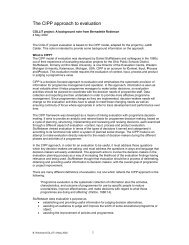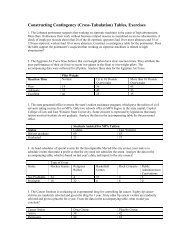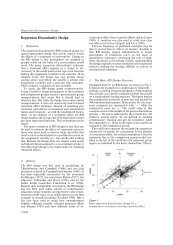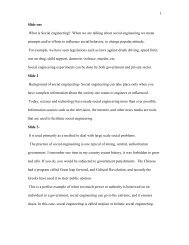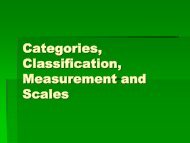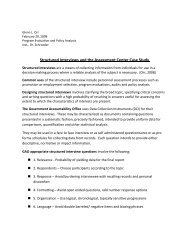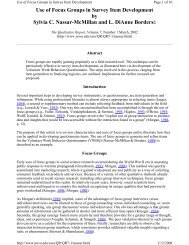The Problem
The Problem
The Problem
You also want an ePaper? Increase the reach of your titles
YUMPU automatically turns print PDFs into web optimized ePapers that Google loves.
which is a private sector entity, took the lead on the project. Thus, we were forced into a<br />
much more collaborative or facilitative approach.<br />
This facilitative approach has had dramatic impacts upon the success of the project.<br />
From the beginning, we had individual stakeholders representing each quadrant of the<br />
Diagnostic Typology for Primary Stakeholders (see Figure 5). While most people fell<br />
into the supportive category, there were some key players who filled the other areas as<br />
well which required a great deal of effort and whose role in this process warrants further<br />
discussion. First, we will begin with our marginal stakeholder. This was a representative<br />
from the planning district who was originally tasked with spearheading the project. This<br />
person clearly fit the characteristics of this type, bringing low levels of cooperation and<br />
low levels of threat to the process. He was also very characteristic of a dependent<br />
stakeholder, because while he possessed a sense of urgency, he lacked legitimacy and<br />
power, increasingly so as the project progressed and more and more participants began to<br />
have influential impacts on the ATIS project.<br />
As the project progressed, the planning district representative became increasingly<br />
marginalized, primarily because he maintained a great deal of ownership over the project,<br />
and resisted losing control as it expanded and developed. This caused him to lose not<br />
only a great deal of legitimacy in the eyes of the other stakeholders, but also, whatever<br />
power he once maintained was subsequently lost. While he was initially a dangerous<br />
stakeholder (possessing power and urgency), his perspective on the project continued to<br />
reduce the amount of power he had, relegating him to the role of demanding stakeholder.<br />
At this point, it is unclear what his role in the project will be, but it is clear that his ability<br />
to directly influence the outcome is now severely limited.<br />
As noted above, our mixed-blessing stakeholder was the representative from the state<br />
transportation agency. This individual was extremely hesitant about the project, and we<br />
knew that he could be extremely valuable if he could be brought on board, but also a<br />
hindrance if he could not be brought on board. Initially, he was also clearly a dominant<br />
stakeholder, who lacked the sense of urgency to become a definitive stakeholder. As<br />
21




